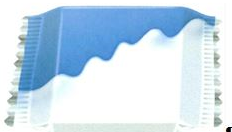On February 2, 2015, (judgment no. 1861) the Italian Supreme Court ruled on a case involving two Italian companies active in the sector of furniture: Natuzzi S.p.A., owner of the Italian and European trademark ‘Divani & Divani’ (Trademark 1), and Divini & Divani S.r.l. (Divini & Divani), which started to use the trademark ‘Divini & Divani’ (Trademark 2).
Natuzzi claimed that the use of Trademark 2 was illegitimate, constituted an act of unfair competition as well as trademark infringement claiming the use generated confusion amongst customers. In particular, Natuzzi stated that, even if Trademark 1 was composed by two common words (literally in English ‘Sofas & Sofas’), it acquired specific distinctiveness. Consequently, Natuzzi sought to prevent Divini & Divani from using Trademark 2 as a company name and a trademark for its products. Divini & Divani counterclaimed that Natuzzi’s requests were groundless because there could not be any confusion between the trademarks and, in any case, Trademark 1 was weak and consequently, not worthy of protection.
Read More





